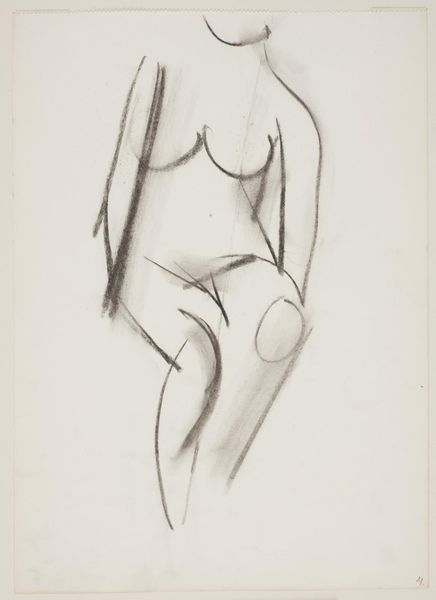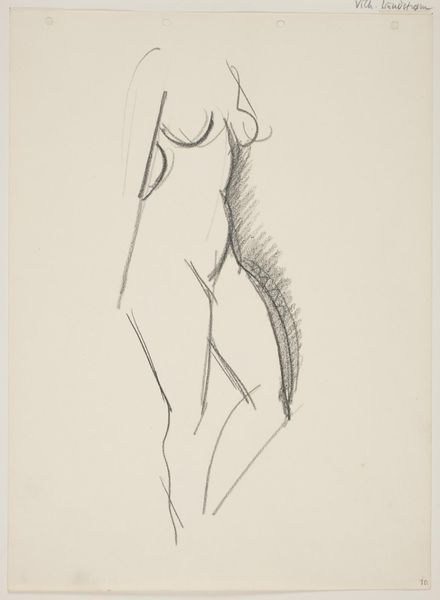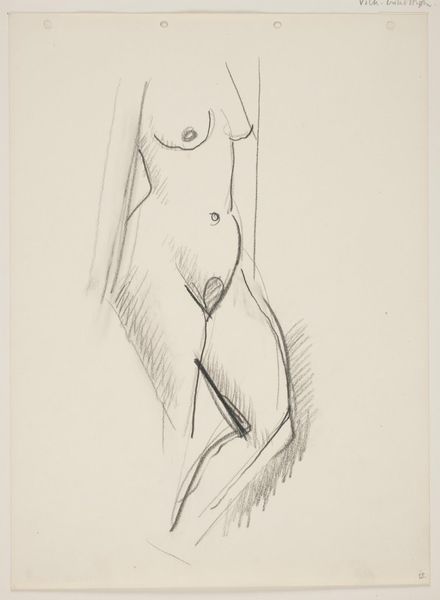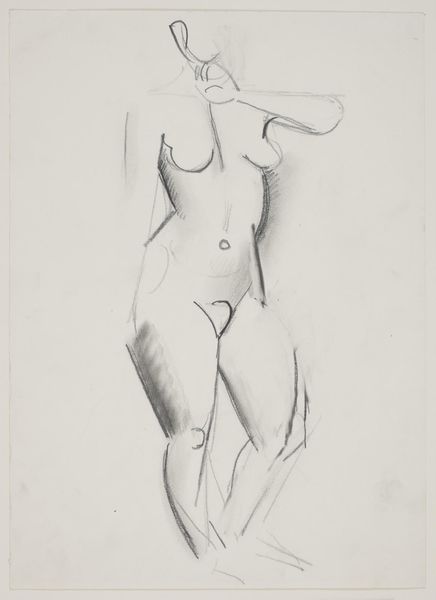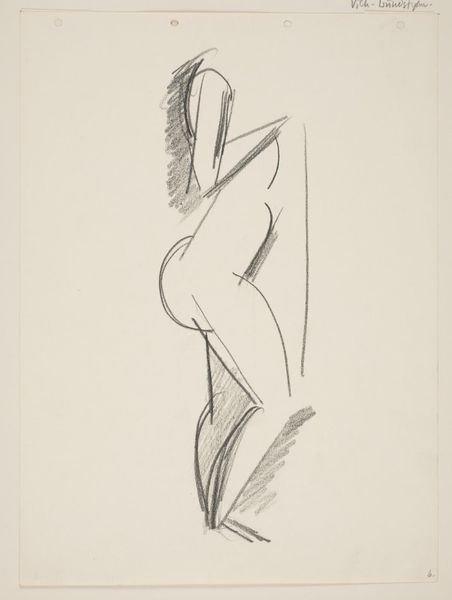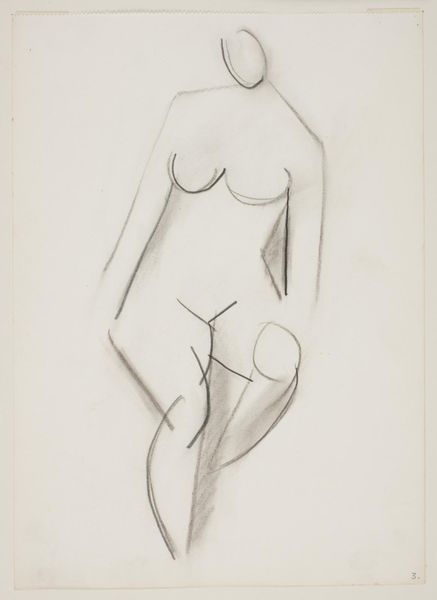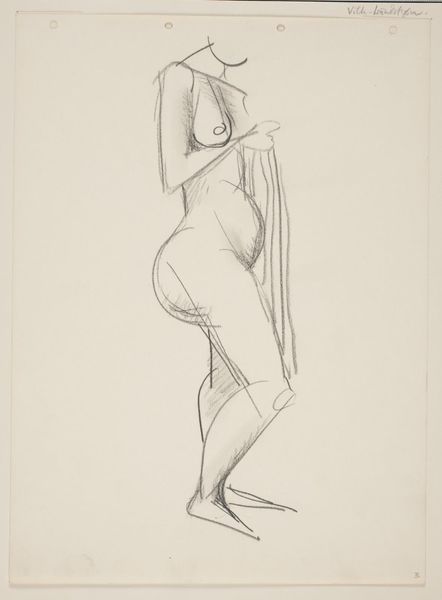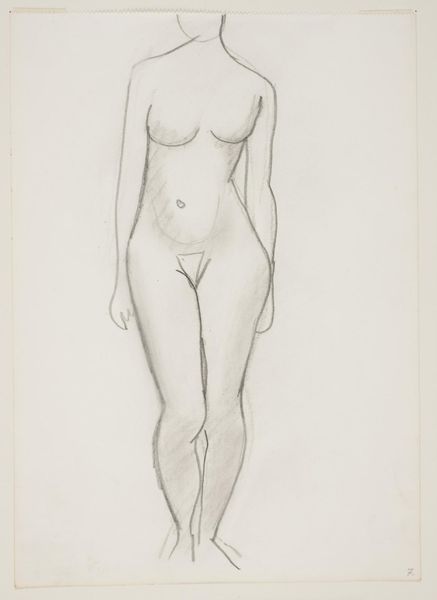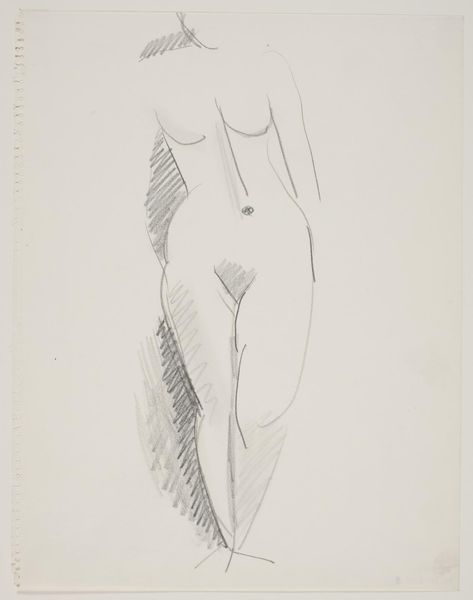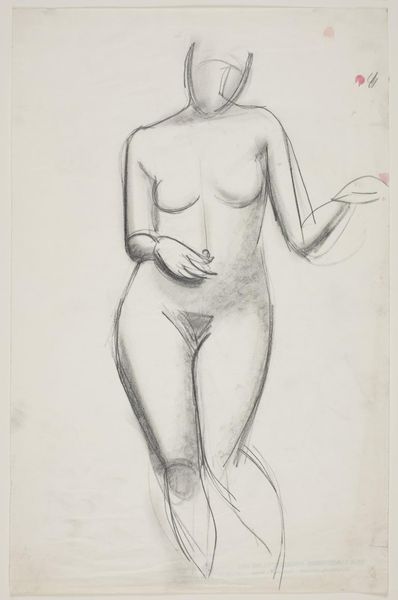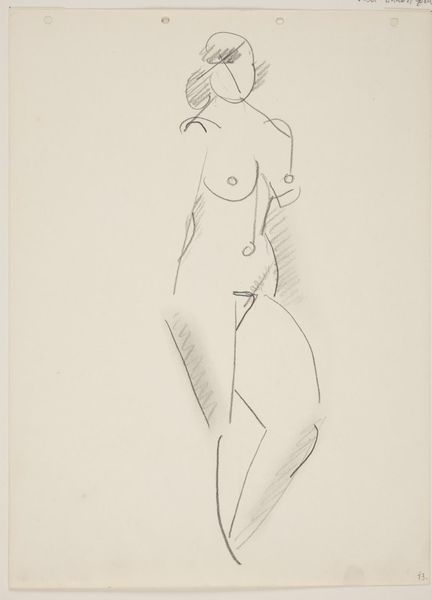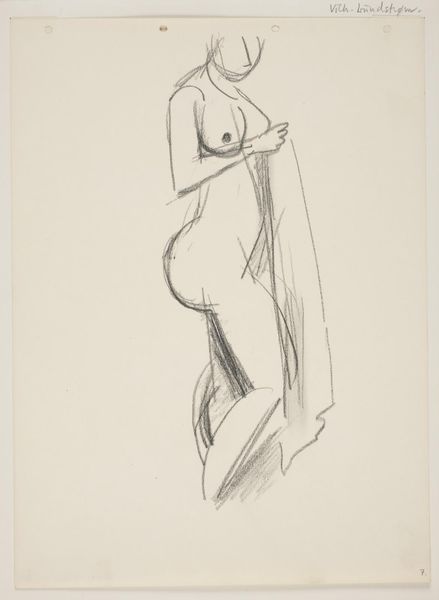
drawing, pencil
#
drawing
#
figuration
#
pencil drawing
#
pencil
#
portrait drawing
#
nude
#
realism
Dimensions: 392 mm (height) x 284 mm (width) (bladmaal)
Curator: Looking at Vilhelm Lundstrom’s pencil drawing from 1934, “Kvindelig model, torso,” one immediately confronts the academic tradition. The drawing belongs to the collection of SMK, Statens Museum for Kunst. Editor: My first impression is a sense of the figure being suspended, almost ethereal, despite the realism suggested by the shading. There's a stark vulnerability communicated, but it’s held at a distance somehow, cool perhaps. Curator: Absolutely, and it's vital to examine the position of the female nude within art history. Consider the male gaze that traditionally shaped the depiction of women's bodies. Lundstrom’s work certainly participates in this dialogue. How do we interpret this representation through feminist theory, for example? Is it celebrating the body, or objectifying it? Editor: It's a nuanced point. While the realistic rendering leans into a conventional approach, the unfinished nature, the visible pencil strokes, and the cropping of the torso complicate a simple objectification. There’s an erasure, a denial of full context that provokes questioning. It forces us to think about not just *what* is shown, but *what* is intentionally omitted. Curator: The social history of art making is vital here. Was Lundstrom commenting on the restrictions placed upon representing the full form at the time? Or responding to demands of his patrons? Considering the artwork's production and reception is crucial to truly understanding its meaning. Editor: Perhaps there's also a disruption of power relations here. The artist, by cropping the image, makes it a part-object; the male gaze becomes less certain and absolute. It gives space, maybe, for the subject's own silent presence. Curator: It shows, once again, the complexity embedded within a simple-seeming image. We must address the historical context while viewing it through a contemporary, critical lens. Thank you. Editor: Indeed. Considering that even a fleeting glimpse can provoke crucial questions about gender, power, and artistic intention is something to be embraced when observing art from across time periods and traditions.
Comments
No comments
Be the first to comment and join the conversation on the ultimate creative platform.
